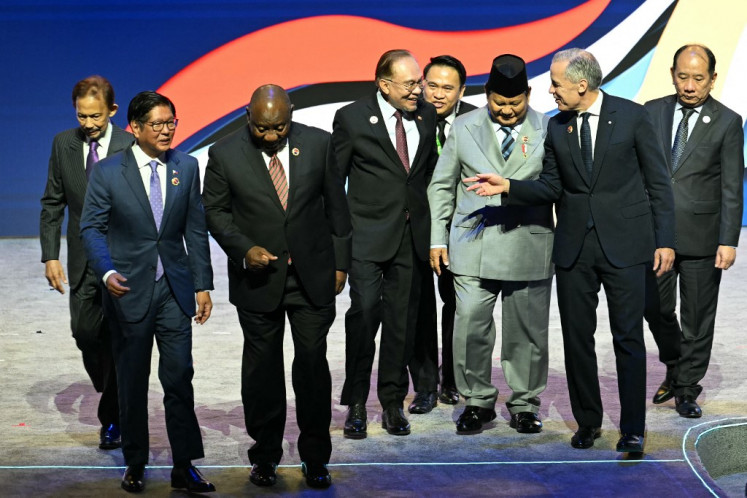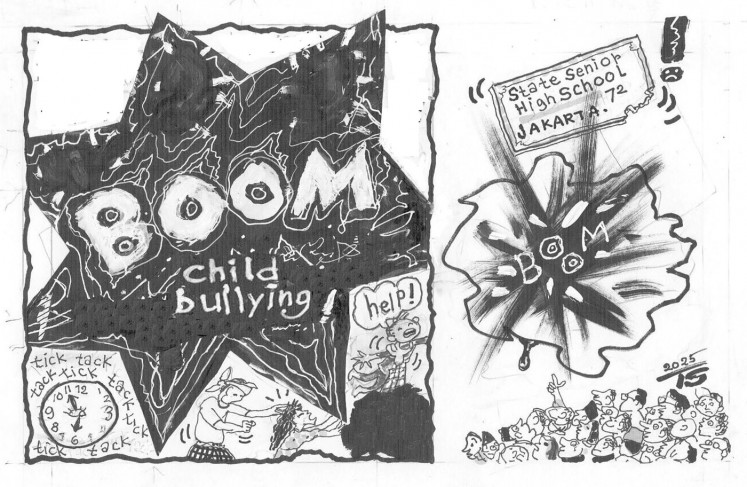Popular Reads
Top Results
Can't find what you're looking for?
View all search resultsPopular Reads
Top Results
Can't find what you're looking for?
View all search resultsInsight: Innovations in managing and developing human capital
Change text size
Gift Premium Articles
to Anyone
O
ver the past few years, the role of human resources (HR) has expanded far beyond administrative tasks. HR professionals today are expected to drive innovation, enhance the employee experience and align people strategies with business goals. With the help of technology, these responsibilities have become more manageable, and in many ways, more impactful.
Through my professional journey, from interning at the Supreme Court, leading talent development at Shinergy to working in recruitment teams at Allianz Indonesia and KPMG Indonesia, I have seen firsthand how innovation shapes the future of HR. The changes are not just about using new tools; they are about transforming the way we work and collaborate. This includes digitalization of processes, data-driven recruitment, learning technologies and cross-functional collaboration.
- Digitalizing bureaucratic and administrative processes
One of the most profound innovations in HR is the shift from manual to digital systems, especially in large institutions with complex bureaucratic structures.
During my internship at the Supreme Court, I identified a recurring issue in how civil servants submitted their Surat Tugas Izin Belajar (study leave proposal letters). The paper-based process was inefficient: documents were lost, mismatched or delayed due to inconsistent formats and physical handovers. In response, I initiated a digitalized submission platform and created a step-by-step tutorial video to guide users through the new process.
This simple innovation led to a marked improvement in workflow efficiency, consistency in documentation and better data management. According to the World Bank, digital systems in public institutions “can reduce transaction costs and increase service transparency.” This is a testament to how even in the public sector, innovation can yield a real-time impact when applied with user needs in mind.
- Data-driven and AI-supported recruitment
Recruitment is no longer just about resumes and interviews. The integration of AI, data analytics and secure background verification tools has transformed how organizations select the best talent.
In my current role at KPMG Indonesia, I manage end-to-end recruitment processes, from sourcing to onboarding. One of the most impactful innovations we use is the TestInvite platform, a powerful assessment tool that provides secure, online testing environments. It includes anti-cheating features, automatic scoring and time tracking, which help recruiters analyze results objectively and fairly. Once candidates pass the assessment, we use VerifyNow, a third-party background check provider that securely delivers detailed employment histories, educational credentials, global watchlist screening and even know-your-customer (KYC) verifications. This enhances our decision-making, ensuring compliance and trustworthiness of potential hires.
The World Economic Forum’s 2023 Future of Jobs Report notes that “AI-powered tools in recruitment are essential to reducing human bias and accelerating hiring cycles.” At KPMG, these tools help us make faster, smarter and more inclusive hiring decisions.
- Enhancing learning and development through e-learning platforms
The training and onboarding of new employees have also evolved significantly, thanks to e-learning platforms and learning management systems (LMS).
At KPMG Indonesia, new joiners undergo a three-day e-learning journey through the firm’s internal intranet platform. This system is integrated with the learning and development team, which monitors progress, provides real-time feedback and generates performance scores automatically. It even alerts new joiners on missing modules and learning gaps, without the need for constant human supervision. This innovation not only reduces logistical burdens but ensures consistency and scalability in onboarding. As McKinsey reported, “Digital learning allows organizations to upskill employees faster and at scale while tailoring experiences based on individual progress.”
At Shinergy, where I led the HR department, we implemented a similar concept using collaborative tools to introduce objectives and key results (OKR), personality assessments and peer-based development. Even with limited resources, innovation was possible by integrating simple tools into workflows that enhanced engagement and accountability.
- Employer branding and candidate experience
Another critical area of innovation in HR is employer branding, which shapes how potential and existing employees perceive an organization.
While working as a recruiter at Allianz Indonesia, I realized how storytelling, visual content and interactive campaigns could elevate our image and attract better talent. We collaborated with marketing and used social platforms and recruitment events to highlight Allianz's values and culture.
Likewise, at KPMG, the HR team worked closely with marketing and communications (MarCom) and IT to revamp the careers website. This cross-functional collaboration ensured that design, UX, messaging and job listings were all aligned with KPMG’s branding and business strategy. This demonstrates how HR now operates at the intersection of recruitment, tech and marketing.
According to LinkedIn’s Global Talent Trends Report, 75 percent of job seekers consider an employer’s brand before even applying. Therefore, innovation in branding is as essential as innovation in selection and onboarding.
- Cross-functional collaboration and strategic alignment
One of the most overlooked but vital aspects of innovation in HR is collaboration across departments. Innovation thrives when HR aligns with IT for technical support, finance for budget decisions and leadership for vision and strategy.
For example, our collaboration with the IT and MarCom teams at KPMG helped integrate our careers website with internal systems, branding materials and analytics tools. Similarly, when working on recruitment campaigns or internal HR projects, we routinely consult the legal and compliance and learning and development departments to ensure alignment and scalability.
The Deloitte 2023 Global Human Capital Trends report emphasizes, “The future of work will be built through ecosystems. HR can no longer operate in isolation but must co-create with others across the enterprise.” My experience validates this: innovation is not just about tools, it is about teamwork.
Human-centered innovation for the future of work
Throughout my career, I have seen that innovation in managing human capital is not just a buzzword, it is the backbone of modern HR. Whether it is digitalizing paperwork in public institutions, leveraging AI for secure hiring, scaling onboarding through LMS platforms or co-creating with marketing and IT teams, innovation has helped HR professionals become more strategic, responsive and people-focused.
Moreover, innovation does not always require cutting-edge technology. It is easy to get caught up in the tools and platforms, but at the end of the day, HR is about people. The real innovation lies in finding ways to support growth, improve communication and build stronger teams. To conclude, I reflect on a powerful quote by Satya Nadella, CEO of Microsoft:
“Ultimately, it is not going to be about man versus machine. It is going to be about man with machines.”
When we innovate not for technology’s sake but to elevate human potential, we build workplaces that are not only efficient, but also empathetic, inclusive and collaborative. The future of HR is here, and it is human, empowered by technology, enriched by partnerships and inspired by purpose.











